Today, Apple has announced two new MacBooks to its lineup: MacBook Pro 14-inch and MacBook Pro 16-inch. They bring a plethora of new innovations, stepping up the user experience in a remarkable way.
Let’s discuss the various new changes introduced to the MacBook Pro –
Performance:
Performance has been the highlight of this keynote. Apple has introduced two new chips: M1 Pro and M1 Max. Both of these groundbreaking chips deliver extraordinary performance while also consuming low power.

Image: Apple
The CPU in M1 Pro and M1 Max can offer up to 70% faster CPU performance than the M1 chip and the GPU in M1 Pro is up to 2x faster than the M1 chip, while M1 Max is up to 4x faster than the M1 chip. Users will be able to effortlessly work on graphic-intensive tasks with this level of performance.
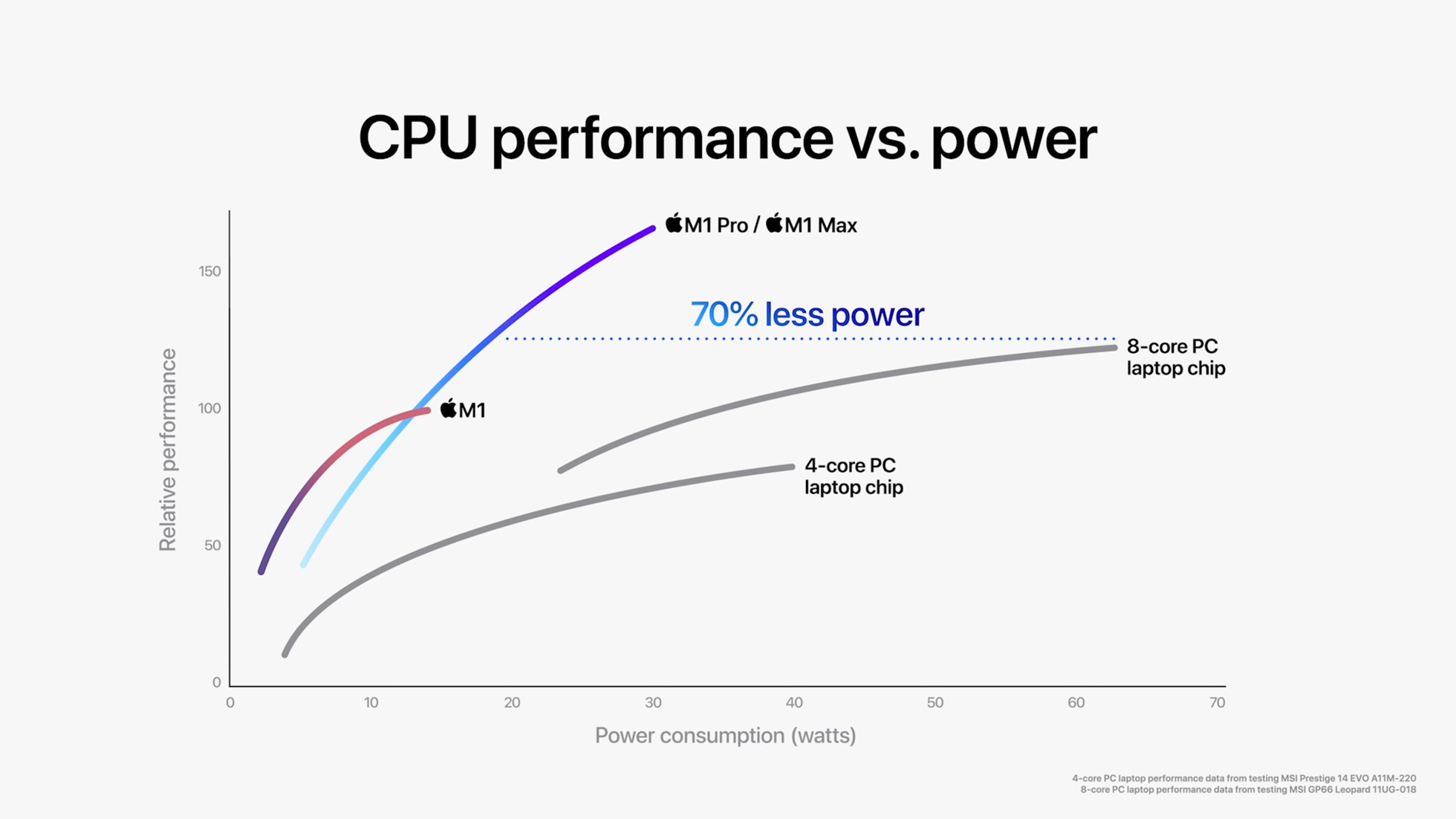
Image: Apple
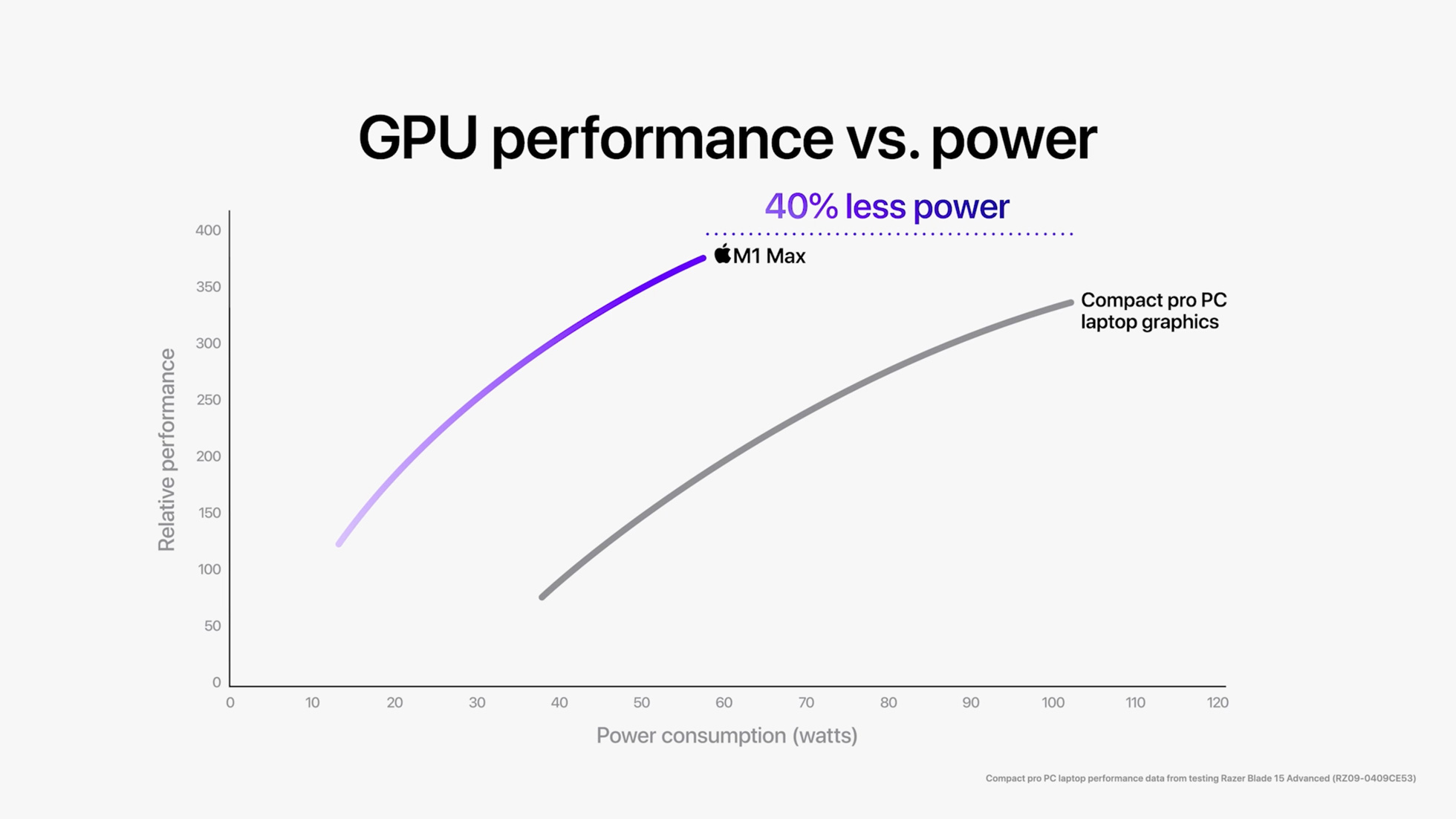
Image: Apple
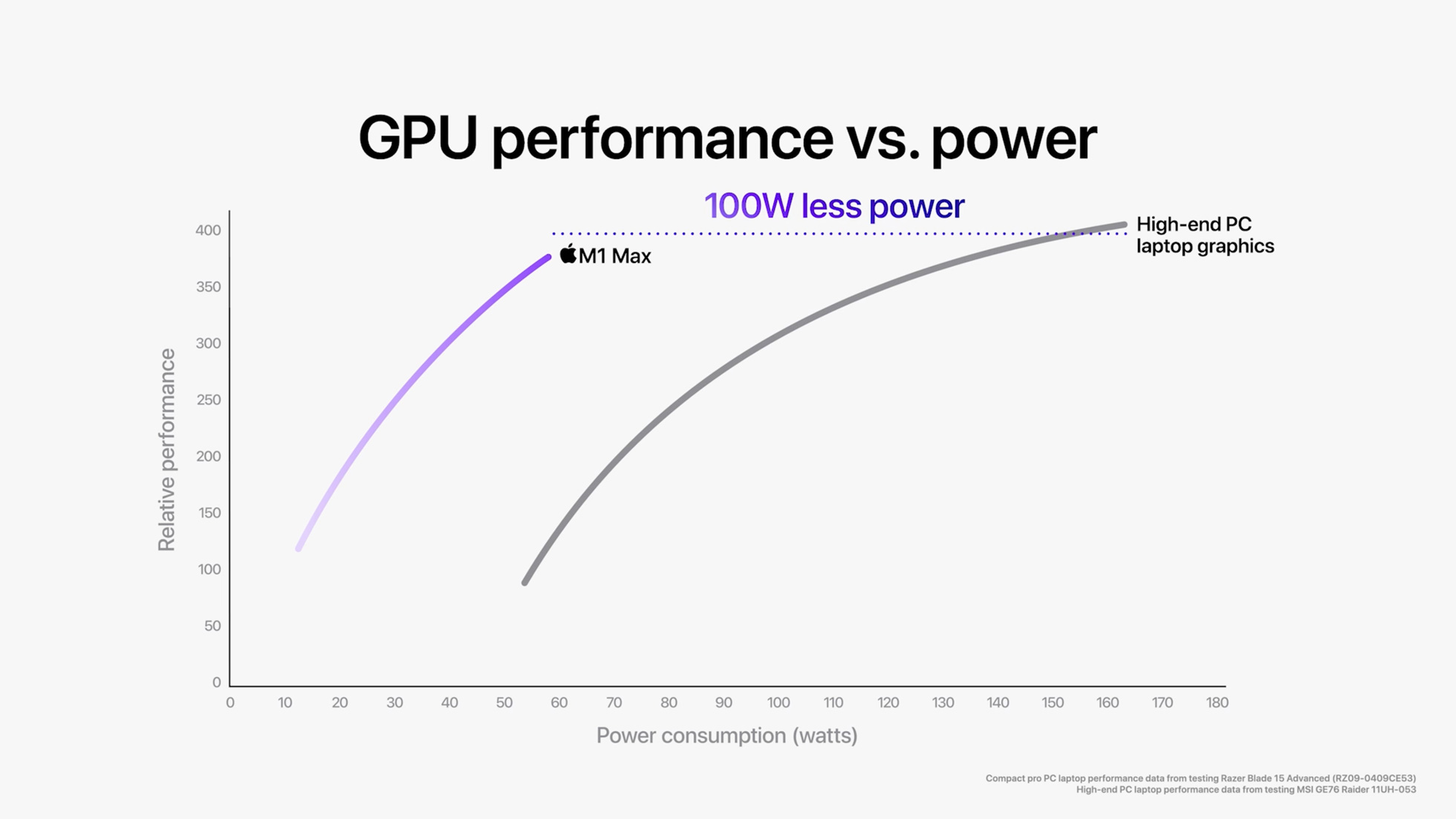
Image: Apple
The M1 Pro chip offers up to 10-cores of CPU and 16-cores of GPU along with up to 32GB of unified memory and 200GB/s memory bandwidth. The M1 Pro has dedicated encode and decode media engines supporting H.264, HEVC, and ProRes codecs. It can also provide up to 20 streams of 4K ProRes video playback and has support for up to 2 external displays. The M1 Max chip offers up to 10-cores of CPU and 32-cores of GPU along with up to 64GB of unified memory and 400GB/s memory bandwidth. The M1 Max has two dedicated encode engines and one decode media engine. It can provide up to 7 streams of 8K ProRes video playback and has support for up to 4 external displays. Both these chips have the capability to run the Pro Display XDR at its full resolution.
Let’s have a look at the real-world improvements these new chips bring:
14-inch:
Comparing it to the M1 MacBook Pro (13-inch), the 10-core CPU in M1 Pro and M1 Max delivers
- Up to 3.7x faster project builds using Xcode.
- Up to 3x more Amp Designer plug-ins in Logic Pro.
- Up to 2.8x faster computational fluid dynamics performance in NASA TetrUSS.
With the 16-core GPU in M1 Pro and the 32-core GPU in M1 Max, the 14-inch MacBook Pro transforms graphics-intensive workflows with:
- Up to 9.2x faster 4K render in Final Cut Pro with M1 Pro, and up to 13.4x faster with M1 Max.
- Up to 5.6x faster-combined vector and raster GPU performance in Affinity Photo with M1 Pro, and up to 8.5x faster with M1 Max.
- Up to 3.6x faster effect render in Blackmagic Design DaVinci Resolve Studio with M1 Pro, and up to 5x faster with M1 Max.
Both these powerful chips are supercharged with a 16-core Neural Engine that allows users to enjoy faster ML tasks, including:
- Up to 8.7x faster object tracking performance in Final Cut Pro with M1 Pro, and up to 11.5x faster with M1 Max.
- Up to 7.2x faster scene edit detection in 1080p ProRes 422 video in Adobe Premiere Pro.
- Up to 2.6x faster performance when selecting subjects in images in Adobe Photoshop
16-inch:Â
- Up to 3x faster computational fluid dynamics performance in NASA TetrUSS.
- Up to 2.1x faster project builds in Xcode.
- Up to 2.1x faster publish performance in Vectorworks.
With the 16-core GPU in the M1 Pro chip and 32-core GPU in the M1 Max chip, the new 16-inch MacBook Pro can effortlessly deliver faster graphics performance with:
- Up to 2.9x faster-combined vector and raster GPU performance in Affinity Photo with M1 Pro, and up to 4.5x faster with M1 Max.
- Up to 2.5x faster render in Maxon Cinema 4D with Redshift with M1 Pro, and up to 4x faster with M1 Max.
- Up to 1.7x faster 8K render in Final Cut Pro with M1 Pro, and up to 2.9x faster with M1 Max.
With the 16-core Neural Engine on both the M1 Pro and the M1 Max, ML tasks are faster than ever, including:
- Up to 4.4x faster scene edit detection in 1080p ProRes 422 video in Adobe Premiere Pro.
- Up to 3.6x faster object tracking performance in Final Cut Pro with M1 Pro, and up to 4.9x faster with M1 Max.
- Up to 1.5x faster performance with M1 Pro and up to 2x faster with M1 Max when selecting subjects in images in Adobe Photoshop.
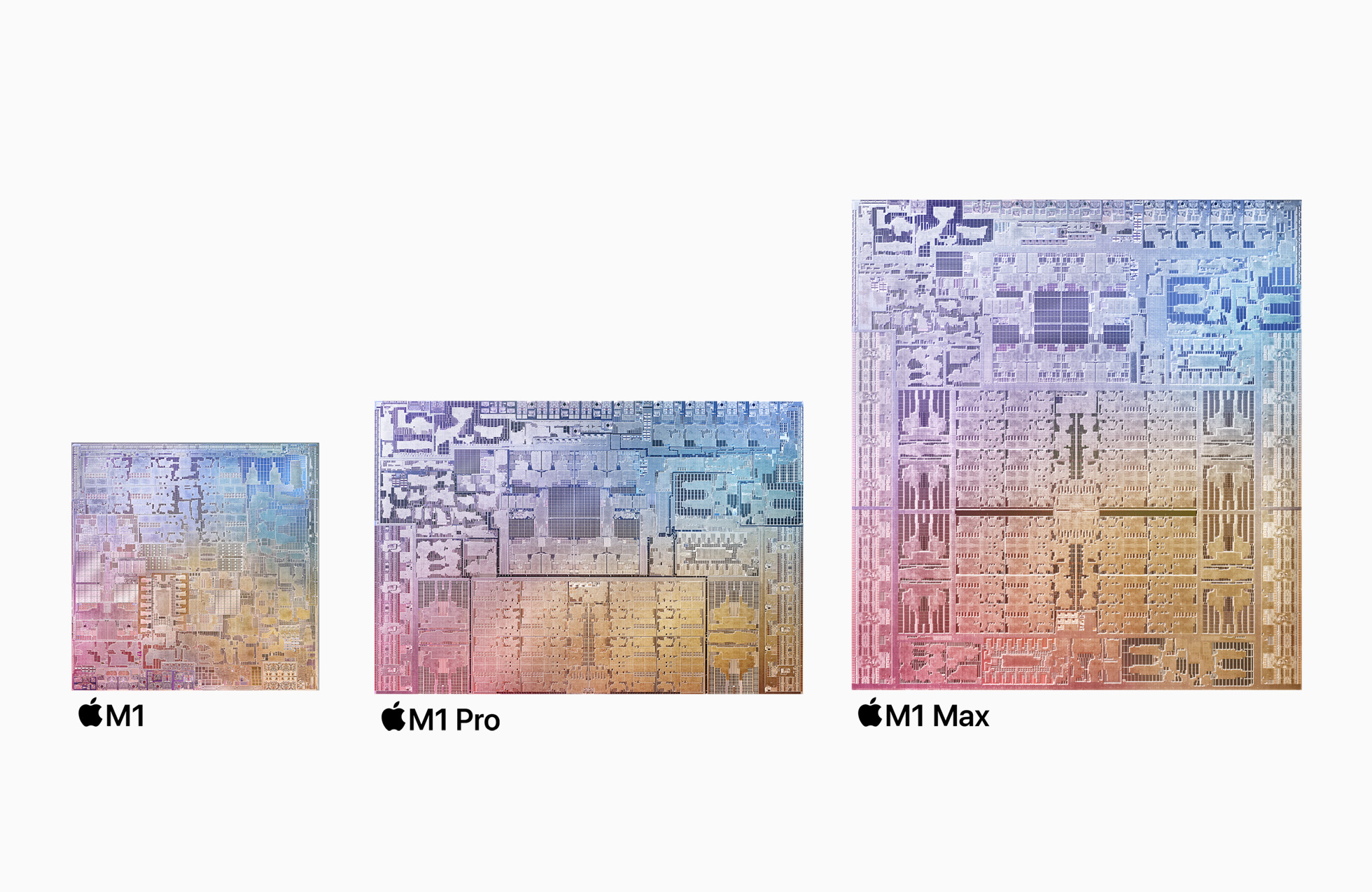
Image: Apple
Battery:Â
The 14-inch model offers up to 17 hours of video playback, which is 7 hours more than the previous generation, while the 16-inch model gets up to a remarkable 21 hours of video playback, which is 10 hours more than the previous generation. Apple says that this is the longest battery life ever on a Mac notebook. With this improvement in Battery Life, developers will be able to compile up to 4x as much code on Xcode and up to 2x longer battery life will be offered to Photographers working in Adobe Lightroom Classic when editing images. Apple offers a 67W USB-C Power Adapter with the M1 Pro with 8-core CPU and a 96W USB-C Power Adapter with the M1 Pro with 10-core CPU or M1 Max. To get the 96W USB-C Power Adapter for the M1 Pro with 8-core CPU, an additional $20 will be charged. All the 16-inch MacBook Pro variants come with a 140W Power Adapter.
Design:Â
The enclosure of the 14-inch and 16-inch models of the MacBook Pro takes advantage of a new advanced thermal system that can circulate 50% more air than the previous generation, even at lower fan speeds, resulting in a sustained performance with the notebook being cool and quiet.
The Magic Keyboard on the new MacBook Pro is set in a double-anodized black well, elegantly highlighting the backlit glyphs on the keys. The function row also makes a return to the most powerful notebook in the Mac lineup. It includes a wider escape key and it replaces the Touch Bar. The Touch ID Sensor is still present on the top right side of the keyboard, after the function keys.
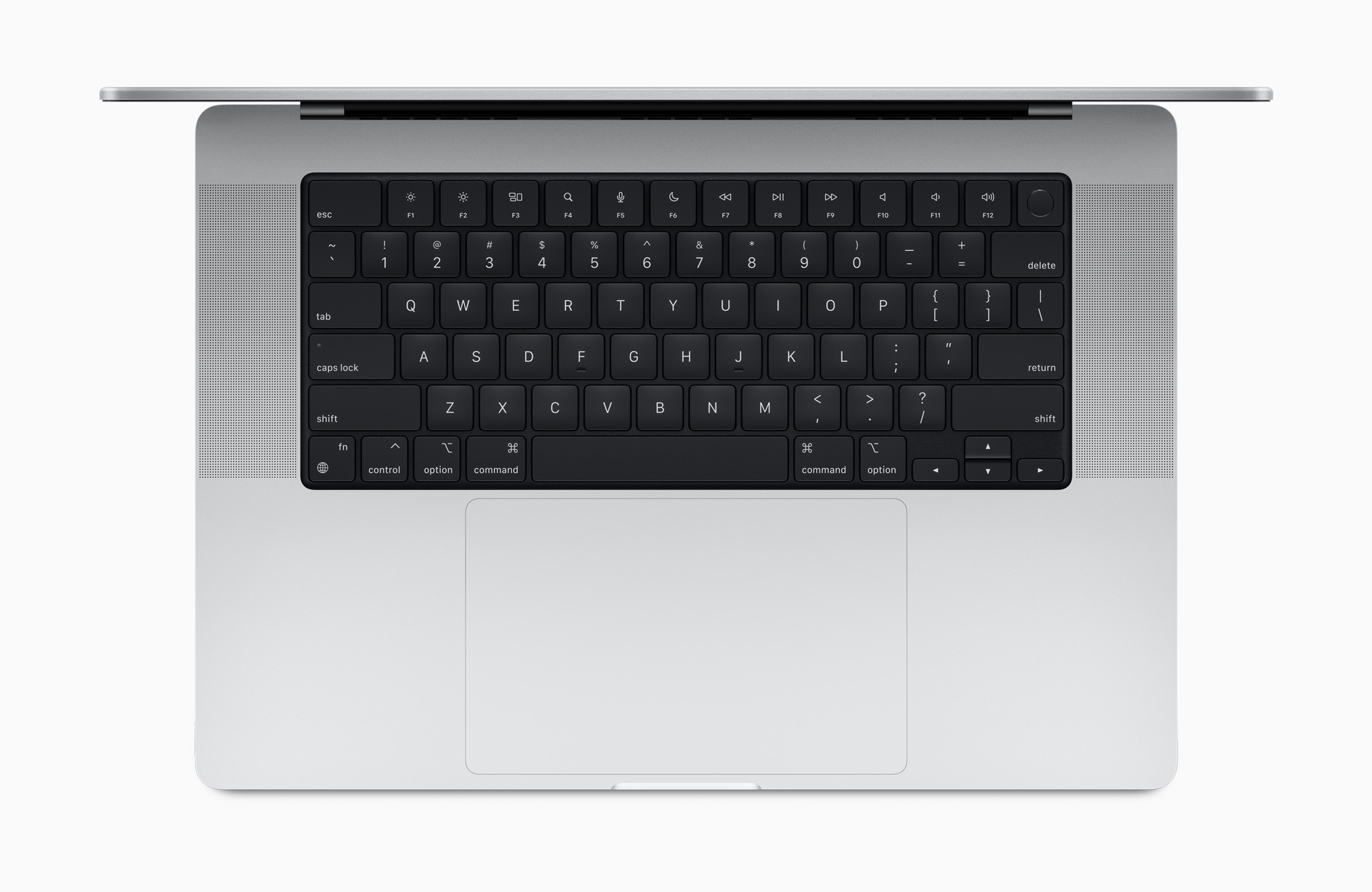
Image: Apple
MagSafe has come back to the MacBook Pro along with a wide array of ports! The left side of the MacBook Pro features a MagSafe 3 Port for charging, Two Thunderbolt-4 (USB 4) ports, and a headphone jack while the right side features one HDMI 2.00 Port, one Thunderbolt-4 (USB 4) port, and a SDXC Slot. The three Thunderbolt 4 (USB-C) ports support Charging, DisplayPort, and transfers with up to 40Gb/s.
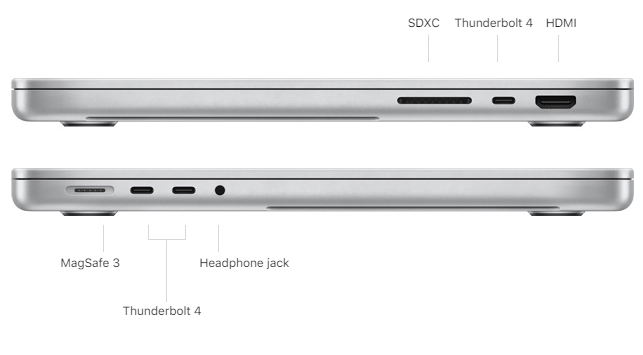
Image: Apple
Display & Camera:
Apple claims that the new MacBook Pros have the World’s Best Notebook Display. Why you ask? The new MacBook Pros feature a Liquid Retina XDR display with the mini-LED technology, which is the same display used in iPad Pro 12.9-inch. This will result in deeper blacks, due to more local dimming zones on the mini-LED Display. The Liquid Retina XDR display can deliver up to 1,000 nits of sustained full-screen brightness and a phenomenal 1,600 nits of peak brightness, along with a 1,000,000:1 contrast ratio. Outdoor usage in the sun shouldn’t be an issue at all due to the bright display. The extreme dynamic range on the new display of the MacBook Pro brings HDR content to life with extreme detail in shadows, brilliant specular highlights, deeper blacks, and more vivid colors due to the Liquid Retina XDR Technology. It also has P3 wide color gamut and supports one billion colors. The 14.2-inch MacBook Pro has a resolution of 3024-by-1964 at 254 pixels per inch with 5.9 million pixels (more than the previous 16-inch MacBook Pro) and the 16.2-inch MacBook Pro has a resolution of 3456-by-2234 at 254 pixels per inch with 7.7 million pixels (most ever on a Mac notebook).
ProMotion makes its way to the MacBook Pro with an adaptive refresh rate of up to 120Hz. The ProMotion technology automatically adjusts the refresh rate according to the content on-screen to preserve battery life. All of these wonderful features on the MacBook Pro Display steps up the viewing experience in a remarkable way.
The new MacBook Pro features a 1080p FaceTime HD camera which Apple claims to be the best ever in a Mac notebook. It doubles the resolution and low-light performance. The powerful image signal processor (ISP) and Neural Engine of M1 Pro and M1 Max is used for computational video, eventually enhancing video quality. This results in sharper video quality more natural-looking skin tones. Have fun with your amazing video calls and work meetings with this all-new Camera! This camera has been accommodated in a display cutout on the top of the MacBook Pro Display. There’s a cutout on the top due to the reduction of bezels on the sides and the top. The side bezels/borders are now 24% thinner with a thickness of 3.5mm and the top bezel/border is now 60% thinner and with a thickness of 3.5mm as well.

Image: Apple
Audio:
Apple has added studio-quality mics that have an even lower noise floor, which eventually results in clearer calls and voice recordings. A high-fidelity six-speaker sound system has been added to the MacBook Pro, that features two tweeters for a clearer soundstage and four force-cancelling woofers, which results in 80% more bass. This sound system also features spatial audio, bring the three-dimensional listening experience to the MacBook Pro. Users will now get a theater-like sophisticated experience. Apple claims that this is the best audio system ever in a notebook.
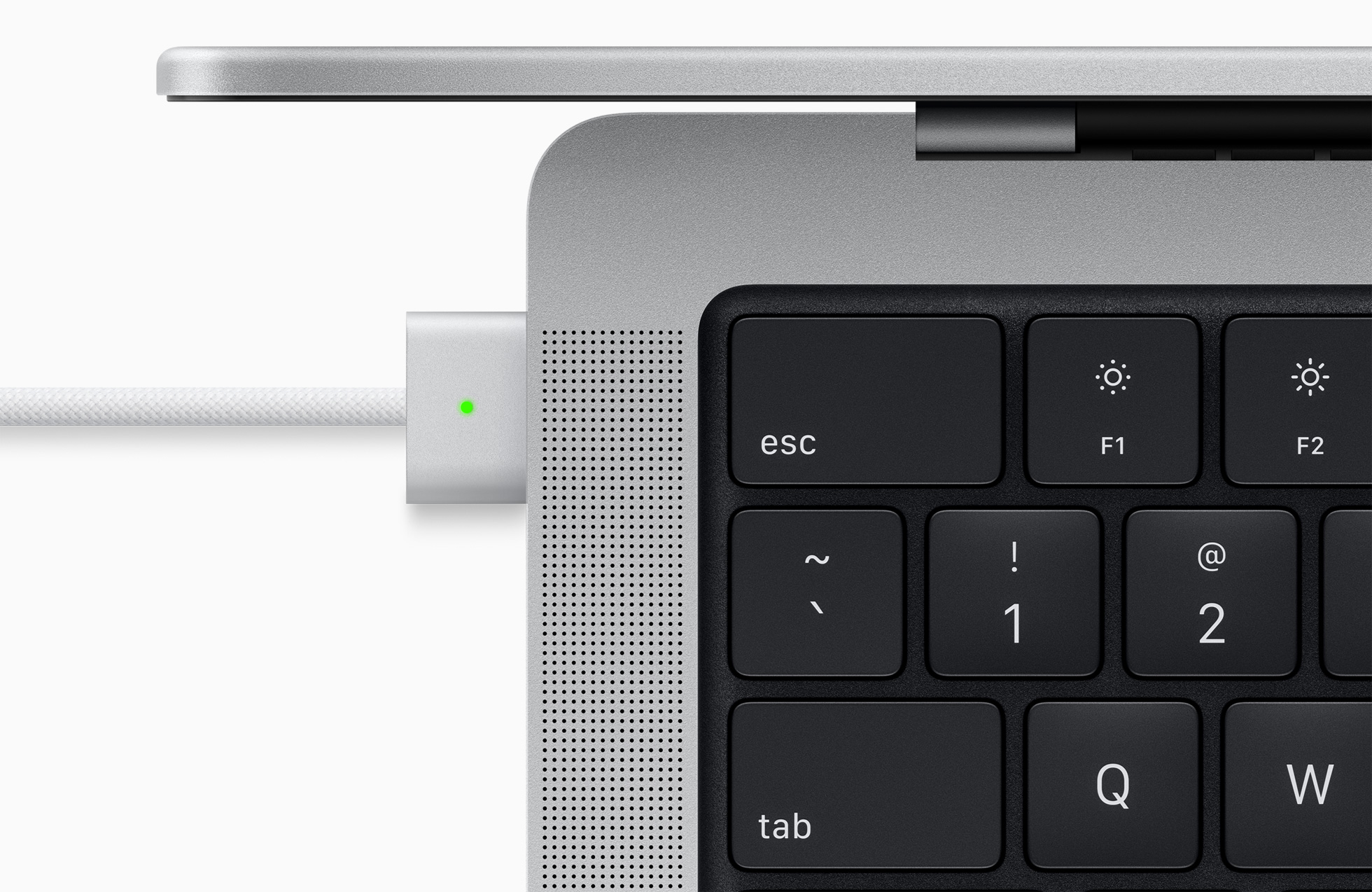
Image: Apple
Pricing, Colors, & Availability:
The MacBook Pro 14-inch starts at $1,999 or $1,849 for education with the M1 Pro featuring an 8-Core CPU, 14-Core GPU, 16GB of Unified Memory, and 512GB of SSD Storage. The 14-inch model can go up to offering a 10-Core CPU, 16-Core GPU, 32GB of Unified Memory, and 8TB of SSD Storage on the M1 Pro Variant ($5,099) and it can go up to offering a 10-Core CPU, 32-Core GPU, 64GB of Unified Memory and 8TB of SSD Storage on the M1 Max Variant ($5,899).
The MacBook Pro 16-inch starts at $2,499 or $2,299 for education with the M1 Pro featuring a 10-Core CPU, 16-Core GPU, 16GB of Unified Memory, and 512GB of SSD Storage. The 16-inch model can go up to offering 32GB of Unified Memory and 8TB of SSD Storage on the M1 Pro Variant ($5,299) and it can go up to offering a 10-Core CPU, 32-Core GPU, 64GB of Unified Memory, and 8TB of SSD Storage on the M1 Max Variant ($6,099). All models are available in two finishes: Space Gray and Silver, and can be ordered now and will be available on October 26th.
All of these new innovations together have made the MacBook Pro, one of the best notebooks in the industry. It is the best in every factor. Whether it be Performance, Battery, Design, Display, Camera, or Audio, the MacBook Pro outperforms some of the best notebooks in the industry. Good hardware requires good software, so macOS Monterey will be here to take advantage of this powerful computer. macOS Monterey will be available to users on Monday, October 25 as a software update.
As usual, the new MacBook Pro was designed while keeping the environment in mind, so it’s free of harmful materials and chemicals to minimize its impact. According to Apple, 100% of the virgin wood fiber in its packaging comes from responsibly managed forests and the rare earth magnets in the speakers, fan motor, and power connector are completely recycled.
Stay updated with the latest Apple news at Appleosophy and follow our Telegram News Channel here. Join the Appleosophy Community on Telegram here.








